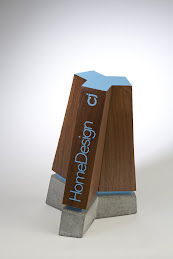Sorry for the delay in posting. A large black concrete countertop project came up with StudioBuild, posts for that will be forthcoming.
Alright, mold is constructed. Tiki man is sealed and coated with release again. Let's get going.

Equal parts polyurethane weighed out.

Everything was going well until this point. The tiki man is hollow, so I taped everything off as best as I could. Not good enough and the polyurethane oozed into the mold. Thinking fast, I filled the tiki with lots of plastic bags to help hold back the pressure. The bucket on the top was to hold them down while everything set. In the process the tiki tilted a little.

Next day I stripped the mold and had a tiki man encased in polyurethane. This is the point when the words of wisdom on the manufacturer's website become haunting. Polyurethane is not like silicone. It sticks to everything, and I mean everything. Since I picked the most complicated shape on the planet, getting him back out was not a fun process. It took weeks of steady progress to free our tiki man from his rubber encasement.

Here is the mold separated from the tiki man, a little worse for wear but still ok. The tiki tilted during the pour and came in contact with the side of the mold so the top didn't turn out perfectly. I am going to cut the mold down an inch so everything should be fine. Thank goodness I used a very strong rubber compound because it took some serious pulling to get this sucker off.
 Now for a test pour to see how he looks.
Now for a test pour to see how he looks.

















 After a few more cans of spray foam and sanding, the shape was pretty close. This reminds me of building the molds for concrete canoes, although on a much smaller scale. The bottom square is the 3" mounting base. Then the table underside tapers from 2 inches thick in the middle to 1 inch at the edge. Since the foam is hard to get real smooth and with a short
After a few more cans of spray foam and sanding, the shape was pretty close. This reminds me of building the molds for concrete canoes, although on a much smaller scale. The bottom square is the 3" mounting base. Then the table underside tapers from 2 inches thick in the middle to 1 inch at the edge. Since the foam is hard to get real smooth and with a short 




